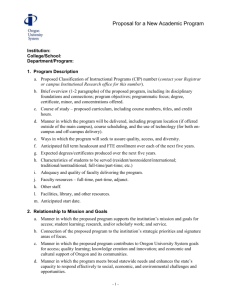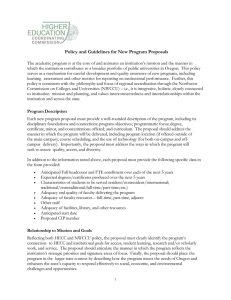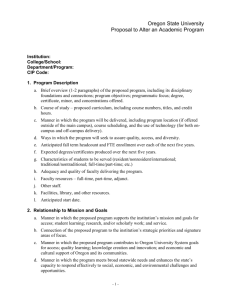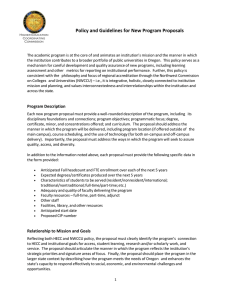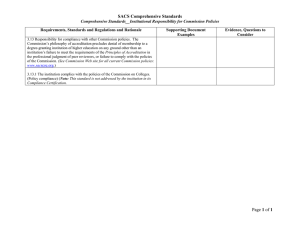HECC New Academic Program Form
advertisement
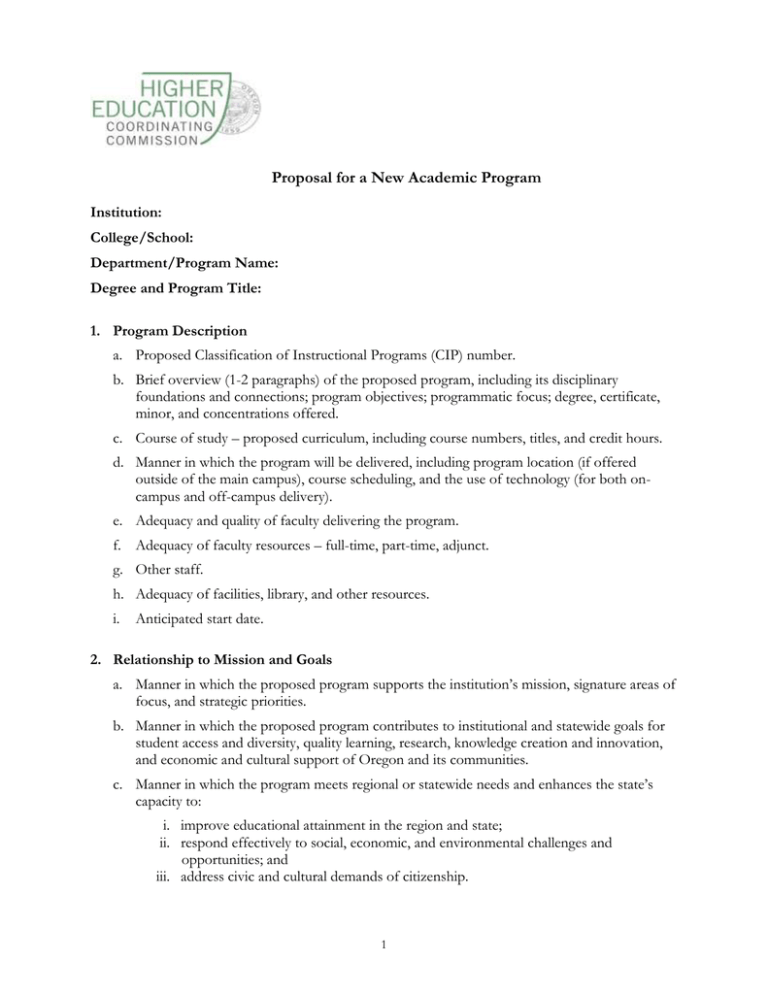
Proposal for a New Academic Program Institution: College/School: Department/Program Name: Degree and Program Title: 1. Program Description a. Proposed Classification of Instructional Programs (CIP) number. b. Brief overview (1-2 paragraphs) of the proposed program, including its disciplinary foundations and connections; program objectives; programmatic focus; degree, certificate, minor, and concentrations offered. c. Course of study – proposed curriculum, including course numbers, titles, and credit hours. d. Manner in which the program will be delivered, including program location (if offered outside of the main campus), course scheduling, and the use of technology (for both oncampus and off-campus delivery). e. Adequacy and quality of faculty delivering the program. f. Adequacy of faculty resources – full-time, part-time, adjunct. g. Other staff. h. Adequacy of facilities, library, and other resources. i. Anticipated start date. 2. Relationship to Mission and Goals a. Manner in which the proposed program supports the institution’s mission, signature areas of focus, and strategic priorities. b. Manner in which the proposed program contributes to institutional and statewide goals for student access and diversity, quality learning, research, knowledge creation and innovation, and economic and cultural support of Oregon and its communities. c. Manner in which the program meets regional or statewide needs and enhances the state’s capacity to: i. improve educational attainment in the region and state; ii. respond effectively to social, economic, and environmental challenges and opportunities; and iii. address civic and cultural demands of citizenship. 1 3. Accreditation a. Accrediting body or professional society that has established standards in the area in which the program lies, if applicable. b. Ability of the program to meet professional accreditation standards. If the program does not or cannot meet those standards, the proposal should identify the area(s) in which it is deficient and indicate steps needed to qualify the program for accreditation and date by which it would be expected to be fully accredited. c. If the proposed program is a graduate program in which the institution offers an undergraduate program, proposal should identify whether or not the undergraduate program is accredited and, if not, what would be required to qualify it for accreditation. d. If accreditation is a goal, the proposal should identify the steps being taken to achieve accreditation. If the program is not seeking accreditation, the proposal should indicate why it is not. 4. Need a. Anticipated fall term headcount and FTE enrollment over each of the next five years. b. Expected degrees/certificates produced over the next five years. c. Characteristics of students to be served (resident/nonresident/international; traditional/ nontraditional; full-time/part-time, etc.). d. Evidence of market demand. e. If the program’s location is shared with another similar Oregon public university program, the proposal should provide externally validated evidence of need (e.g., surveys, focus groups, documented requests, occupational/employment statistics and forecasts). f. Estimate the prospects for success of program graduates (employment or graduate school) and consideration of licensure, if appropriate. What are the expected career paths for students in this program? 5. Outcomes and Quality Assessment a. Expected learning outcomes of the program. b. Methods by which the learning outcomes will be assessed and used to improve curriculum and instruction. c. Nature and level of research and/or scholarly work expected of program faculty; indicators of success in those areas. 6. Program Integration and Collaboration a. Closely related programs in this or other Oregon colleges and universities. b. Ways in which the program complements other similar programs in other Oregon institutions and other related programs at this institution. Proposal should identify the potential for collaboration. c. If applicable, proposal should state why this program may not be collaborating with existing similar programs. d. Potential impacts on other programs. 2 7. External Review If the proposed program is a graduate level program, follow the guidelines provided in External Review of New Graduate Level Academic Programs in addition to completing all of the above information. Revised May 2016 3
